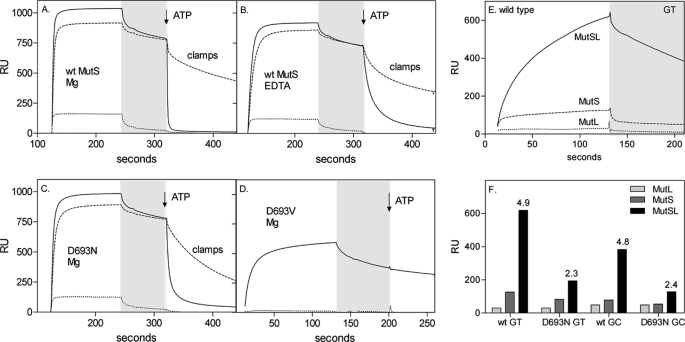FIGURE 5.
ATP-induced sliding clamp formation and MutL recruitment by wild type MutS and mutants determined by SPR. A–D, the formation of sliding clamps was analyzed by flowing 1 μm MutS wild type (wt) or mutants over a chip derivatized with a 41-bp mismatched DNA containing one open end (—) or blocked with anti-fluorescein (–––). After a buffer wash (gray area), buffer containing 1 mm ATP was added (dissociation phase). The control lane contains 41-mer correctly paired DNA with its end blocked by anti-fluorescein (···). The difference in response in the dissociation phase reflects the fraction of MutS trapped as sliding clamps on the blocked DNA after the addition of 1 mm ATP. A, wild type MutS with magnesium in the assay buffer. B, wild type MutS with EDTA in the assay buffer. C, D693N MutS with magnesium in the assay buffer. D, D693V MutS with magnesium in the assay buffer. E, MutL recruitment was monitored using SPR analysis of 200 nm wild type MutS, 400 nm MutL, and 1 mm ATP on a 100-bp heteroduplex (GT) or homoduplex (GC) DNA. F, efficiency of MutL recruitment by wild type and D693N MutS on heteroduplex and homoduplex DNA. The response at 120 s was plotted, and the -fold amplification of the signal due to the presence of MutL is indicated above the MutSL signal bar.

